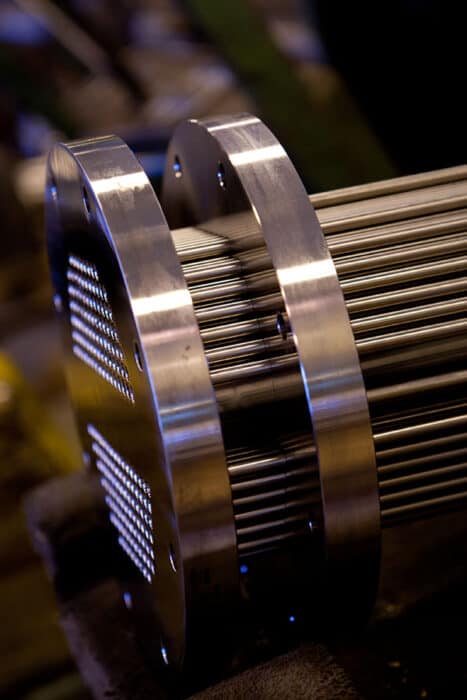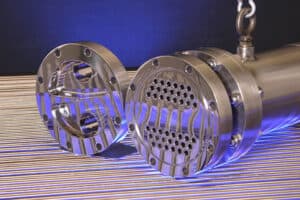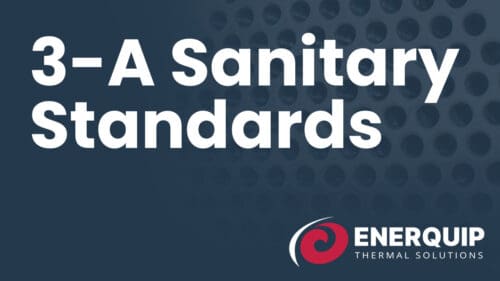Heat Exchanger Helps Aloe Processor Improve Quality
Leave a CommentIn 2012, a producer of pure aloe for medicinal and nutritional products approached Enerquip with a unique cooling problem. In the tropical region where aloe is harvested, the ambient temperatures hover near 95° F (35°C) most of the time. This tropical climate was accelerating bacterial growth in the product, which was lowering its value and shelf life. Enerquip worked with the producer to develop a solution using a shell and tube heat exchanger.
Ideal conditions for the product were discovered after performing some testing. The aloe producer found that if they could cool the product below 40°F (4.4°C) before packaging it, there was a significant improvement in quality.
However, the customer’s lack of utilities at the packaging site led to complications in the cooling process. They had electricity, but the cooling water system already in place did not supply water that was cold enough to provide the low temperatures necessary to impede bacterial growth. Also, the staff using the equipment was not technically inclined, so any solution needed to be easy to control and understand. Because the aloe processor only packed the product several times per season, the equipment needed to be easy to clean, move and store during the off-season.
After reviewing the process and existing equipment, the thermal team at Enerquip realized that a heat exchanger was required for the application. Heat exchangers are built for efficient heat transfer from one medium to another. There are multiple types of heat exchangers that offer the ability to either separate the media or, for them, to be in direct contact.
Shell and tube heat exchangers consist of a series of tubes inside a larger pipe. The tubes contain the product, which is the fluid being heated or cooled. The second fluid – a heating or cooling medium – fills the larger pipe around the outside of the tubes, with the heat transferring between the product and the medium through the tube walls.
During the heat exchanger sizing and selection process, several factors are taken into account:
- The product specifics
- Temperature (in/out)
- Flow Rate (product quantity in/out)
- Cooling medium
- Temperature and size limitations
The ability to easily clean the equipment played a major role in this application. Aloe is a very viscous product, and due to the frequency of use, it became evident that a shell-and-tube heat exchanger would best fit this application. The exchanger was designed in a straight-tube, multi-pass configuration, which allowed the product to travel back and forth through the exchanger several times before heading to the packaging line. The straight tube exchanger option with removable bonnets allowed for easier mechanical cleaning than other designs.
Due to ground water availability and temperature at the plant location, a chiller was added to complete the process for this application. The air-cooled chiller was installed and utilized to provide enough cold glycol and water to cool the aloe product in a single pass through the exchanger. Once filled with glycol and water, the chiller only needed plant electricity to run. The chiller supplier installed simple pushbutton procedures that were easy for the plant staff to follow. Independent shut-off valves and removable hoses between the chiller and exchanger also allowed for easy tear down and cleaning following production.
The end results of this process provided the aloe producer with an efficient system and cleaner, colder and more valuable aloe products.
Click here to read more about the Aloe Vera processing.

 No manufacturer or equipment operator wants to have leaks. But for pharmaceutical processing equipment, leaks are particularly troublesome. Leaks create the possibility of product contamination, as well as corrosion or other chemical reactions that may occur when process and utility fluids mix.
No manufacturer or equipment operator wants to have leaks. But for pharmaceutical processing equipment, leaks are particularly troublesome. Leaks create the possibility of product contamination, as well as corrosion or other chemical reactions that may occur when process and utility fluids mix.



